The Westminster edition is from the Elegance range. It is the second limited edition launch from this series, following the success of the Deco Diamond. Each pen from the Elegance range has a unique design and is produced to the highest standard of English craftsmanship.
Conway Stewart owners include the British Royal Family, Prime Ministers, and US Presidents past and present. As we are also an official gift of the British Government, it seems fitting that we should pay homage to one of the most important buildings in the history of England, the Palaces of Westminster.
Westminster Palace is one of England's most significant buildings. Not only is it a tourist attraction due to its wonderful architecture, it is also a grand landmark of much of England's history.
The Palace has given residency to our noble Kings and Queens and became one of the chief centres of London life. It housed the courts of law and was the place of many notable state trials: William Wallace (1305), Thomas More (1535), the Gunpowder Plot conspirators (1606), Charles I (1649) and Warren Hastings (1788-95).
The site is also the traditional venue for Coronation banquets and other historical events including the presentation of Addresses to the Queen on the Silver Jubilee and Golden Jubilee, the marking of 50 years since the end of World War II and many other important events.
Westminster mediaeval Palace was entirely destroyed by a fire on 16 October 1834. It took more than 30 years to complete the construction of the new Palace of Westminster. The building itself was designed by Charles Barry, while Augustus Welby Pugin was responsible for every aspect of the interiors, as well as for creating working drawings of all the exterior details. It is in the Gothic style which makes it look older than it actually is.
Augustus Welby Pugin was the foremost British architect of the 19th century. He was heavily influenced by his father, who shared his profound love of medieval Gothic architecture. Pugin is today considered to be the chief figure in the revival of Gothic design. Although he was heavily criticized by many in the Victorian era, he maintained that the structure of the building itself should be the base from which the decoration was evolved in a clear and honest way.
Conway Stewart draws the design inspiration for the detailed engraving on the cap and barrel from the work of Pugin featured on the exterior walls of the Palace of Westminster itself.
The small diamond shaped recesses covering the cap and barrel are based on similar decorative detail on the outside of the Palace.
The tiny oak leaves in the recesses are a symbol of England, whose mighty oak forests built the navy and made England a maritime nation, spreading the ideas of democracy from the Mother of Parliaments around the World.
The unenameled oxidized borders were partly drawn from other elements of the structure of the building and recreated in a flowing frieze that unites the design as a whole.
The use of a deep rich Teal colour in the enamel with striking contrasts is true to the gothic style. It gives emphasis and depth to the low relief. This is known as Basse Taille enameling. Both the cap and barrel of the Westminster edition are meticulously crafted out of solid sterling silver, bearing the English hallmark.
The Westminster limited edition pen is available in an edition of just 100 fountain pen or roller ball writing modes. The fountain pen is mounted with the large rhodium plated, iridium tipped 18 carat solid gold nib, offered in eight grades. It utilizes the converter cartridge filling mechanism.
ARCHIVE
Elegance Series 'Special Edition Westminster', 2007
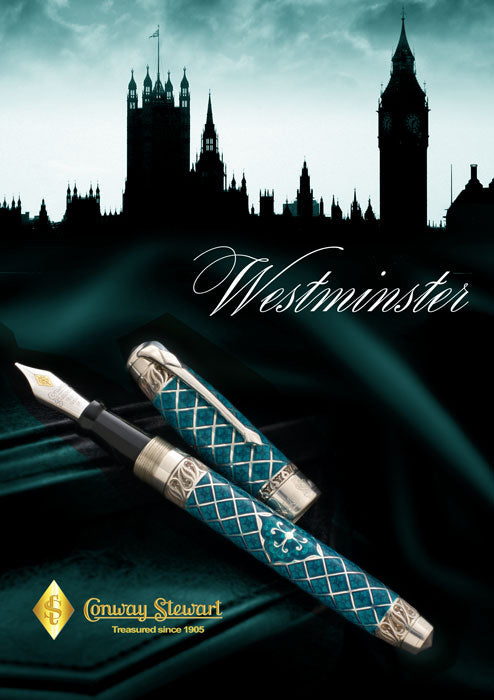



Archive Blog Posts
WES Journal edition #126, Winter 2023
Spotlight on Conway Stewart Originally published in WES Journal 126, pp 26-29, 2023
The History of Conway Stewart
The Beginning In 1905, Mr. Frank Jarvis and Mr. Tommy Garner formed Conway Stewart & Co. Limited at 13 Paternoster Row LondonEC1, next to St Paul’s Cathedral in London. Today,...
Conway Stewart 'Babbage'
Charles Babbage is popularly known as the “Father of Computing” for his pioneering work with computing machines. The use of Jacquard punch cards, chains and subassemblies, and the logical structure...
Conway Stewart Evergreen Sterling Silver Duro Special Edition
SOLD OUT! Retail List Price Fountain Pen or Roller Ball — £599 $970 €630 Welcome to our February 2010 Special Edition — the Conway Stewart Evergreen. Based on our popular Sterling Silver Duro model,...
The Balmoral
Following the success of our Windsor, which was inspired by the ornate decoration gracing the creations of English gunsmiths, Conway Stewart is pleased to announce the second in this prestigious...
Conway Stewart Cavendish Edition
Conway Stewart is proud to announce our new model in English hallmarked solid sterling silver, the Cavendish. A bold stylish design that brings together a traditional shape with a crisp...
Conway Stewart 'Elizabeth Garrett Anderson' Limited Edition
Elizabeth Garrett Anderson is regarded as England’s first female doctor; a pioneer in educating women in medicine; a strong supporter of women’s suffrage and opportunities in higher education, as well...
The Wellington Series
Arthur Wesley was born in Dublin in 1769. In 1798, his aristocratic Anglo-Irish family changed their name to Wellesley. In honour of Sir Arthur Wellesley, Conway Stewart commemorates the Duke...
Professional Series - Doctor's & Lawyer's Edition
The new Conway Stewart Professional Series is designed to reflect the dedication and life’s work of individual professional fields. These striking new designs are crafted of gleaming black resin and...
Kipling 'IF' Special Edition
The new Special Edition from Conway Stewart is inspired by one of the most important literary figures in English history. At first glance this pen looks like it has a...
Conway Stewart Belliver Series
The new Belliver model from Conway Stewart is a return to the finest traditions of CS heritage, rooted in attention to detail, a perfect size and weight, as well as...
Conway Stewart Montague and Capulet Series II
The 2013 Montague and Capulet series from Conway Stewart celebrates the principal characters of Shakespeare’s eternal classic Romeo and Juliet, bringing a graceful and elegant slim design to life in...
Excalibur Limited Edition
Conway Stewart is pleased to announce the latest new colour on the popular Churchill model — Excalibur with hallmarked solid sterling silver trim. The Churchill Excalibur hand made resin consists of a...
Conway Stewart Edwardian Limited Edition
Conway Stewart is proud to present our new limited edition sterling silver series, ‘The Edwardian’. Based on our popular Belgravia model, the Edwardian is completely crafted from solid sterling silver...
Conway Stewart Gatsby Limited Edition
“Nominee in the 2014 Pen World Reader’s Choice Awards — Best Cultural or Historical Theme” During the classic era of the 1920s, a fine fountain pen was considered not just a luxury,...
60th Anniversary 100 Series Special Edition - Pistachio
60th Anniversary Celebration! The 100 Series was first launched in 1954 and was quick to become one of the most popular Oversize pens ever made by Conway Stewart. In celebration...
Marlborough Vintage Limited Edition Pens
The Conway Stewart Marlborough Vintage Limited Edition is a distinguished new design, that is inspired by the classic styling of our vintage models and created with our present day manufacturing...
Jaguar Limited Edition
The Conway Stewart Jaguar is a new finish to compliment our sold out Elegance Aztec limited edition. Each pen from the Elegance range has a unique design and is produced...
Conway Stewart Collectors Club - Celebration Pen & Book Special
Offered only to members of our Collectors Club, Conway Stewart is making available the Celebration pens accompanied by a hardback copy of the new book, Fountain Pens for the Million — The...
Conway Stewart Collectors Club - Churchill Carbon Fibre
Conway Stewart is making available exclusively to members of the Collectors Club our award-winning Churchill model with hand wrapped Carbon Fibre overlay covering the cap and barrel. Each pen is...






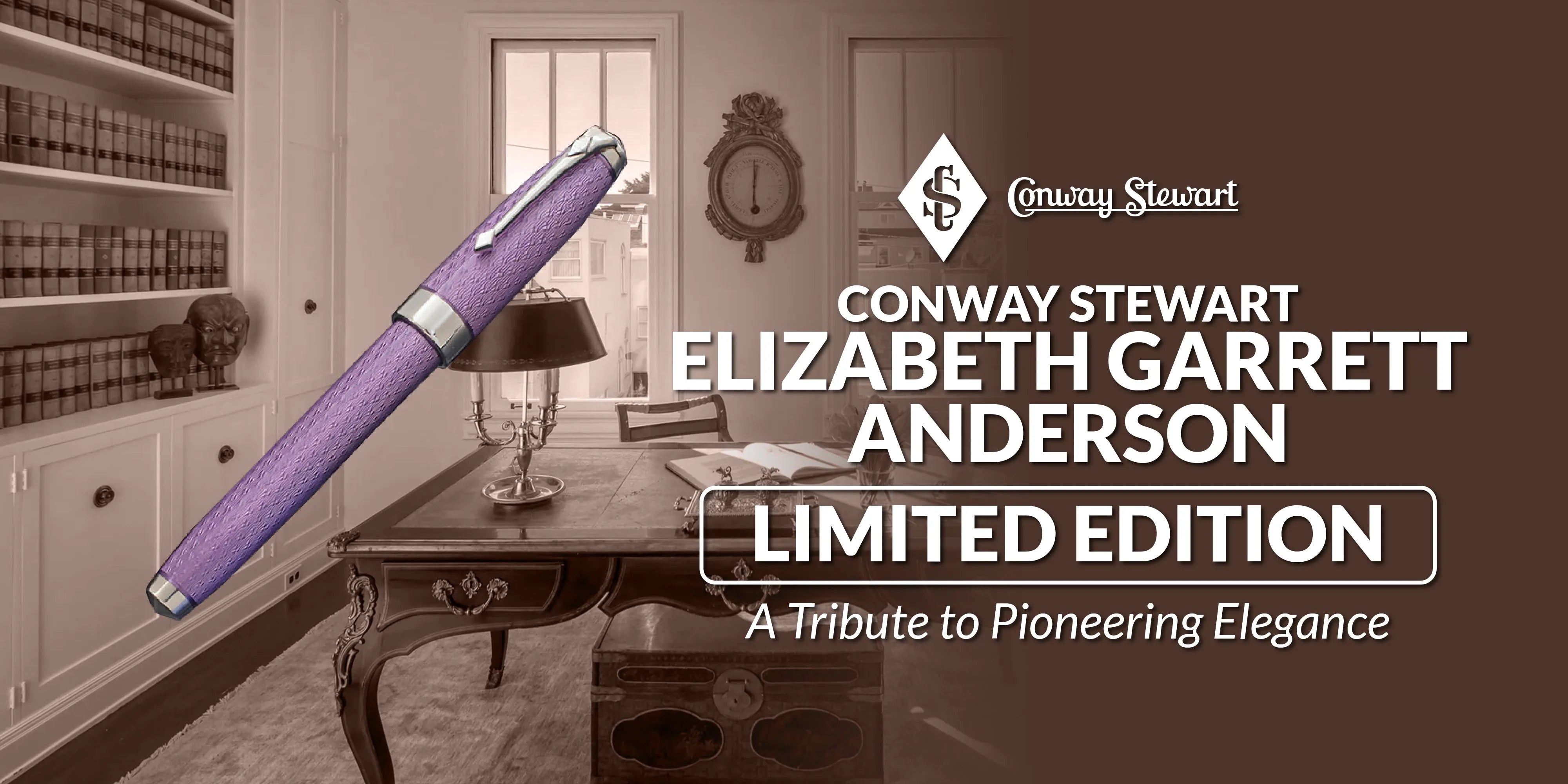


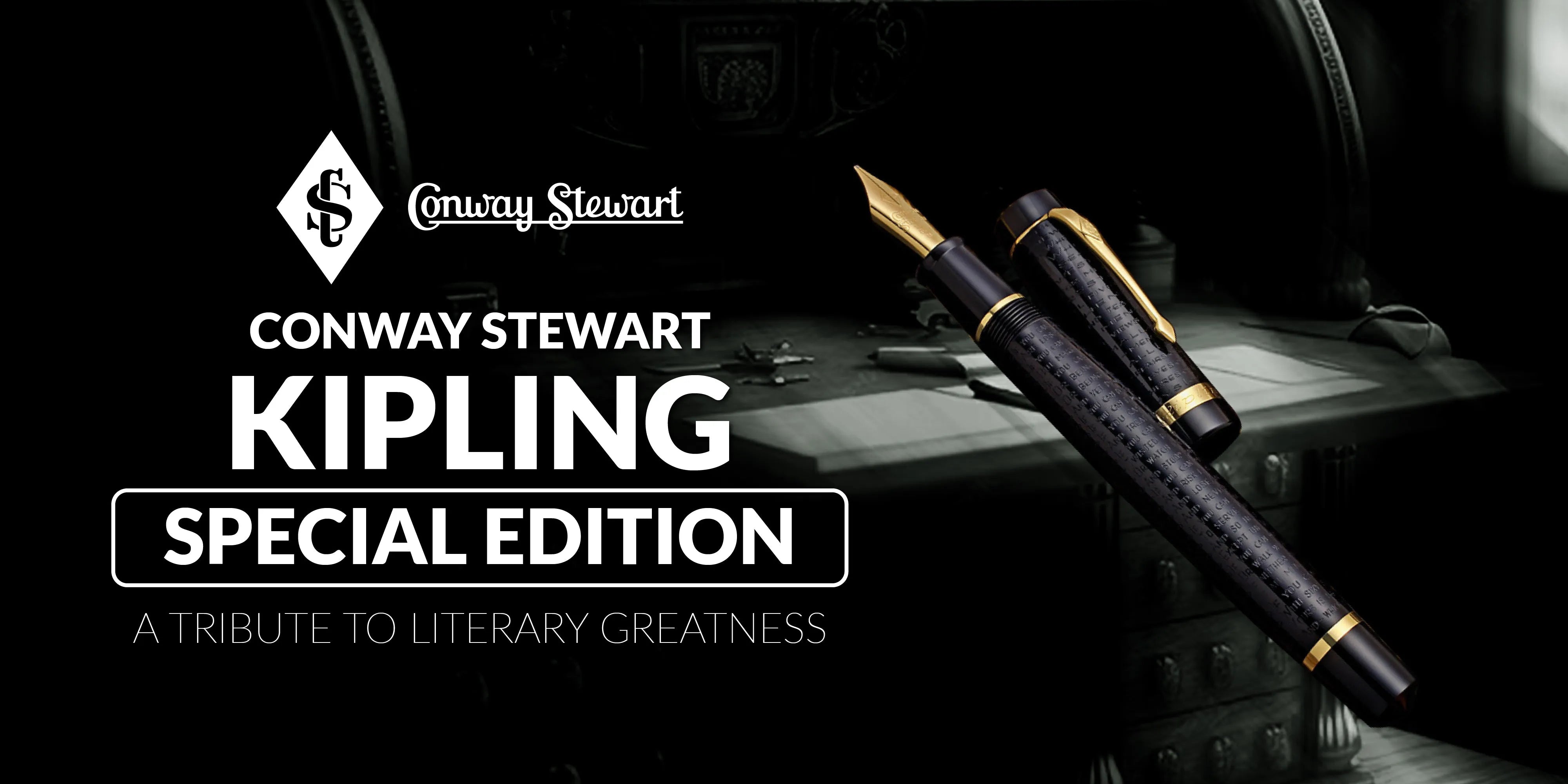
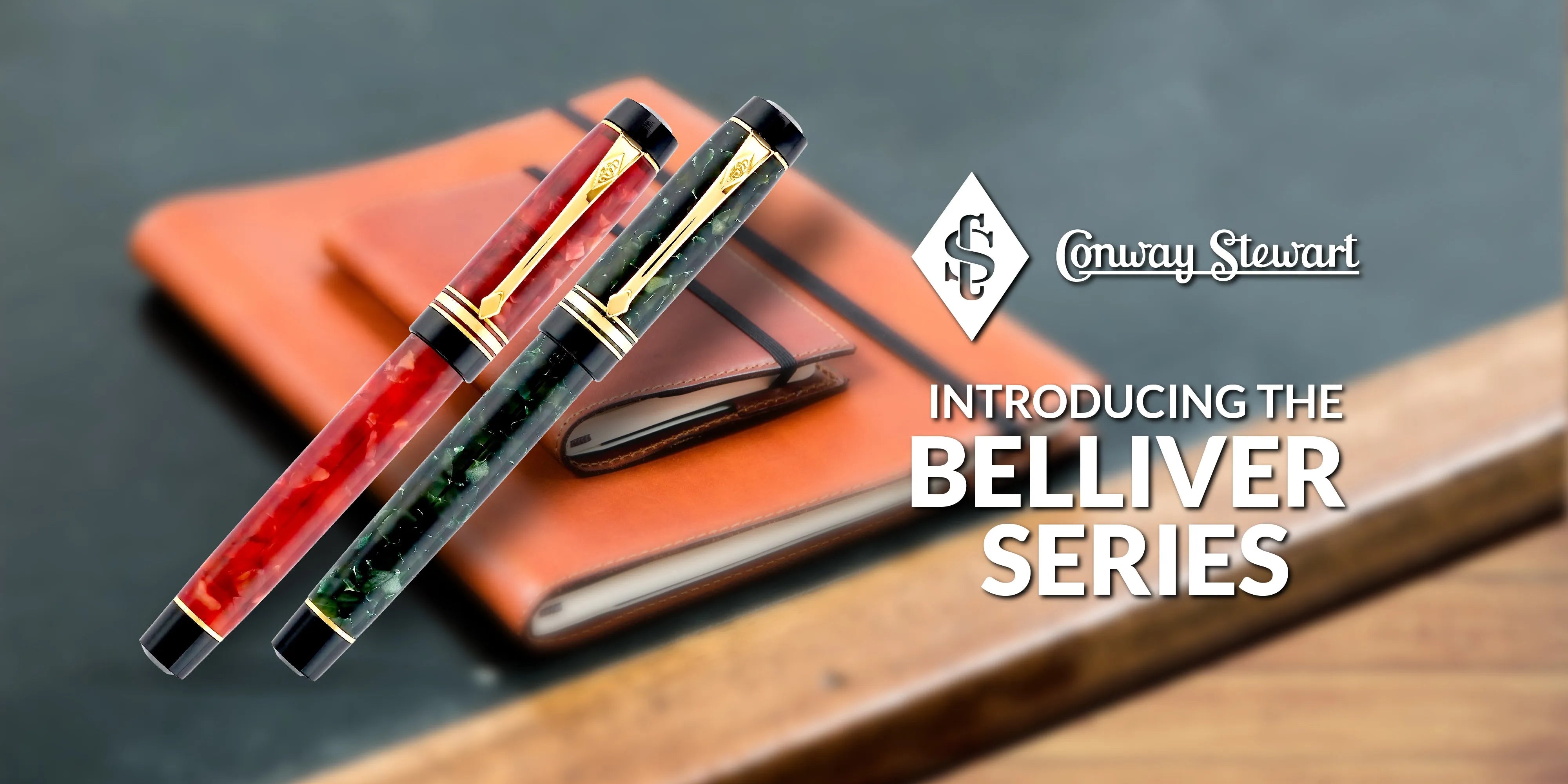
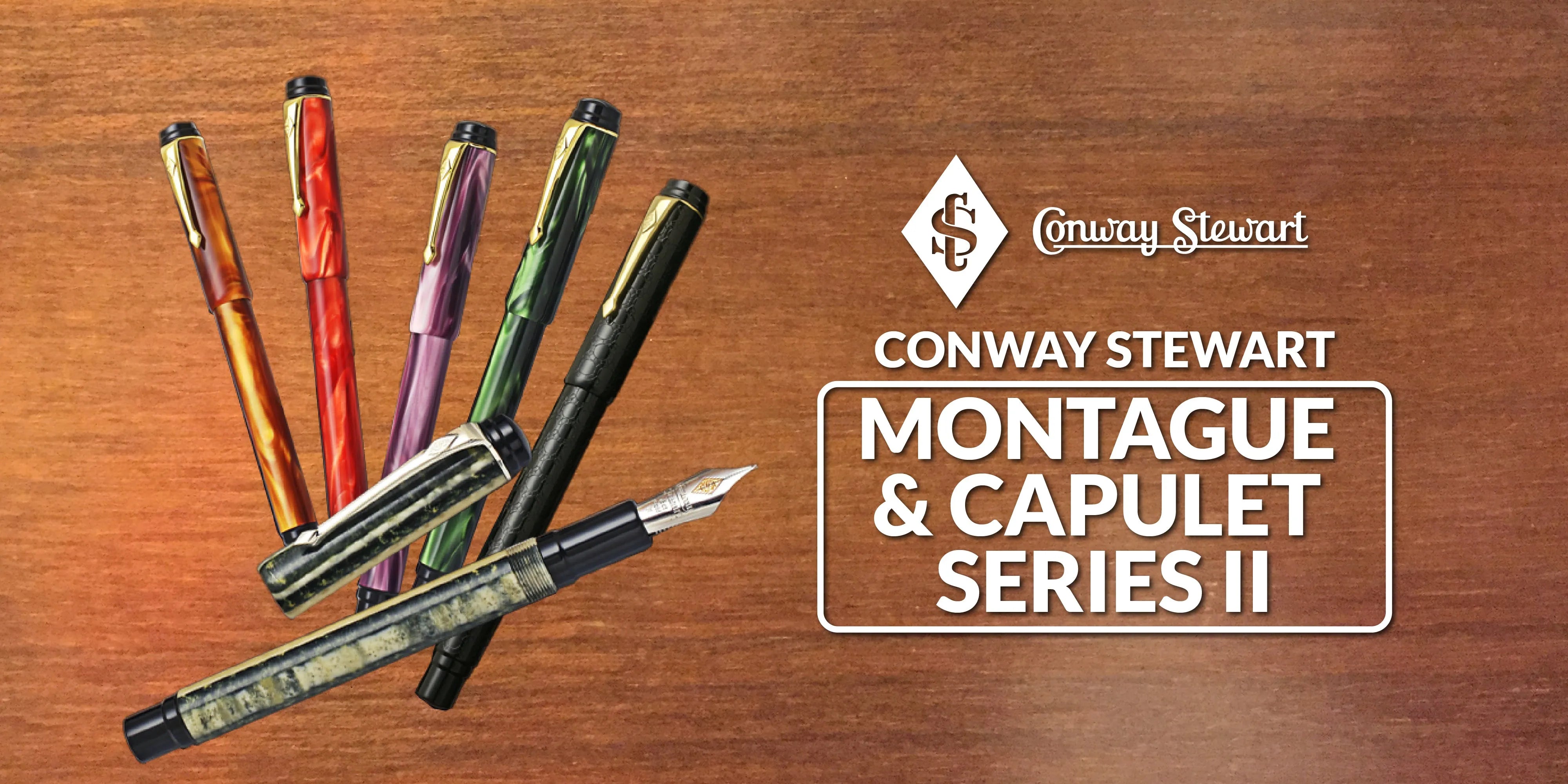






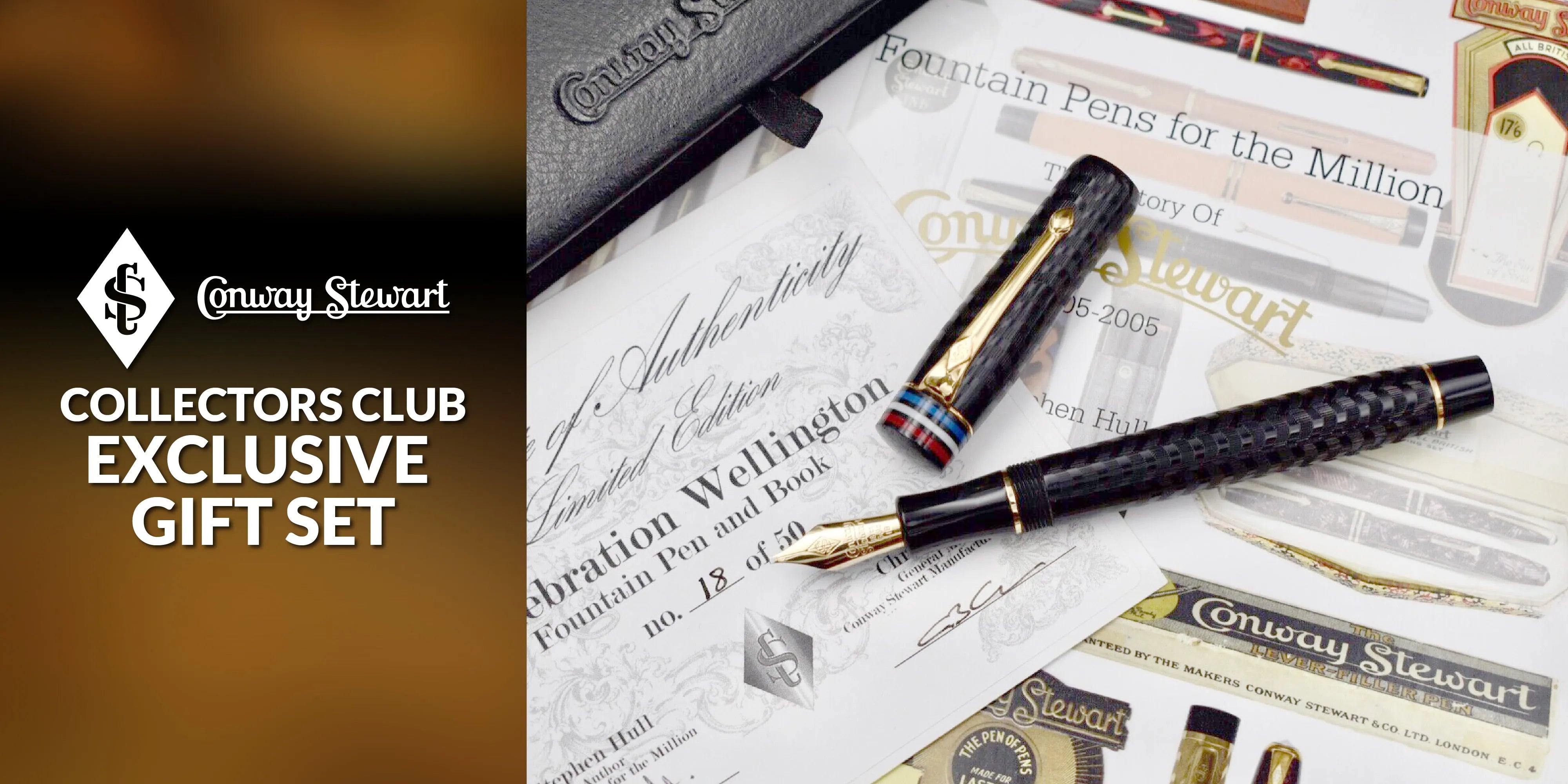

Leave a comment